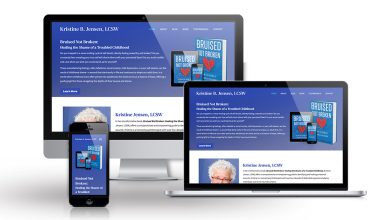How Do Algorithms Map User Journeys in Design Packages?

When you think about great design, your first thoughts might be about colors, typography, or layout. But behind the scenes, the real magic lies in something less visible yet profoundly impactful: algorithms. These intelligent systems help you, as a designer or strategist, understand how users interact with your website. By mapping out user journeys in design packages, algorithms become your silent partner in crafting meaningful, intuitive digital experiences.
If you’ve ever wondered how large-scale platforms seem to “predict” what users want before they ask, or how UX flows align so perfectly with user expectations, the answer lies in data-driven design decisions powered by algorithms. Let’s break this down and look at how these intelligent systems shape user experience inside modern design packages—and how you can use them more effectively.
Understanding the User Journey
Before we dive into the algorithms, it’s essential to clarify what a user journey actually is. At its core, a user journey is a sequence of steps a visitor takes to complete a specific task on your site or product. It might start from a homepage and lead to a purchase, a signup, or an information retrieval process.
Design packages—tools like Figma, Adobe XD, Sketch, or InVision—allow you to create visual and interactive mockups of these journeys. However, without intelligent input, these journeys rely solely on human intuition. That’s where algorithms step in to refine and optimize.
How Algorithms Get Involved
Algorithms in design packages generally integrate through analytics platforms, machine learning models, and behavioral tracking tools. Here’s how they work in context:
Behavioral Data Collection
From the moment someone lands on a page, algorithms begin capturing data points:
- What buttons are clicked?
- How long is spent on a page?
- Is there a scroll or bounce?
- Are users returning to previous steps?
This information is often collected through heatmaps, click tracking, session recordings, and analytics scripts like Google Analytics or Mixpanel.
When this behavioral data is fed into a design package, it can inform you about which parts of your flow are strong and which parts confuse or frustrate users. Some packages even allow direct plugin integrations to overlay real user data onto your design.
Journey Mapping and Clustering
Once the data is collected, algorithms sort user behaviors into clusters. For example, one group of users might always navigate from your homepage to a product page but leave before checkout. Another might go straight to your blog before visiting the “About Us” page.
Using techniques like k-means clustering or path analysis, algorithms create “maps” of these journeys. These maps don’t just show where users go—they also highlight why they drop off, what steps they repeat, and what paths convert best.
In your design package, these journeys can be visualized as overlays, flow diagrams, or interactive prototypes that adapt based on real-world behavior patterns. This turns your guesswork into informed decision-making.
Predictive Modeling and Recommendations
Now things get really interesting. With enough data, algorithms can start predicting what users are likely to do next. For example:
- If a user views two pricing plans and hovers over the FAQ section, they’re 60% likely to bounce—unless shown a chat prompt.
- If a visitor scrolls to a testimonial section within 10 seconds, they’re more likely to convert if a CTA is nearby.
Design packages that integrate with predictive analytics tools can alert you to these behavioral insights in real time. You can then design proactive elements—chat bots, popups, or simplified navigation—to retain users and guide them more effectively.
Real-Time A/B Testing Feedback
Algorithms help you iterate without needing to wait for long-term results. For instance, if you’re testing two versions of a landing page, real-time data can quickly tell you which one is more effective and why.
More advanced systems even use multi-armed bandit algorithms—a smarter form of A/B testing—that dynamically shift more traffic to the higher-performing version while still learning from the lower-performing one.
In your design package, this data can appear as alerts or flow adjustments that suggest removing elements, repositioning CTAs, or rephrasing copy. Imagine a tool that doesn’t just let you test a hypothesis, but helps you build the best version of it.
Making This Actionable for You
Now that you understand what these algorithms do, let’s look at how you can actually use them in your design process.
Connect Your Design Tool with Analytics
Start by integrating your favorite analytics platform with your design tool. Tools like Figma have plugins that can pull in user data from Google Analytics, FullStory, or Amplitude. Use this to create data overlays directly on your design.
Use Heatmaps and Session Replays
Before redesigning a page, review how users interact with your current version. Look at where they click, pause, or leave. Then use that insight to adjust your layout, content hierarchy, and calls-to-action in your design file.
Define Primary Journeys with Actual Data
Instead of assuming how users move through your product, let the data speak. Use clustering algorithms (available through many analytics dashboards) to identify real user patterns. Reflect these in your design flows and wireframes.
Leverage Predictive Insights
Some design tools now integrate AI-driven insights. If yours does, use it. If not, use a separate tool that can offer predictions and then map those into your prototype. Don’t just design reactively—design proactively.
Iterate Based on Feedback Loops
The most important part of algorithm-informed design is continuous iteration. User behavior changes. Trends evolve. Every time your product shifts, loop back through your analytics, gather new data, and update your design packages accordingly.
Why It Matters
By mapping user journeys with the help of algorithms, you’re no longer just designing for users—you’re designing with them. Every insight becomes an opportunity to refine, personalize, and improve the user experience.
Whether you’re working in-house or at a Web Design Company, embracing algorithmic mapping helps you offer greater value. It elevates your design from intuitive to intelligent. It also boosts client trust and satisfaction because your recommendations are data-backed.
Even if you’re freelancing, aligning yourself with data-driven design makes you more competitive. Businesses want proof that design changes will impact metrics like bounce rate, time-on-site, and conversion. Algorithm-based journey mapping is your proof.
A Human-Centered Future Powered by Data
Ironically, the more we lean into algorithmic support, the more human our designs can become. Why? Because data reveals how real people think, feel, and act—freeing us from assumptions and allowing us to meet them exactly where they are.
The next time you open your favorite web design and development packages, think of it not just as a drawing board, but as a canvas for intelligent collaboration. Combine your creativity with the computational power of algorithms, and you won’t just be designing—you’ll be innovating.
And whether you’re part of a startup or a growing Web Design Company, that combination of insight and imagination is exactly what the future of UX demands.









